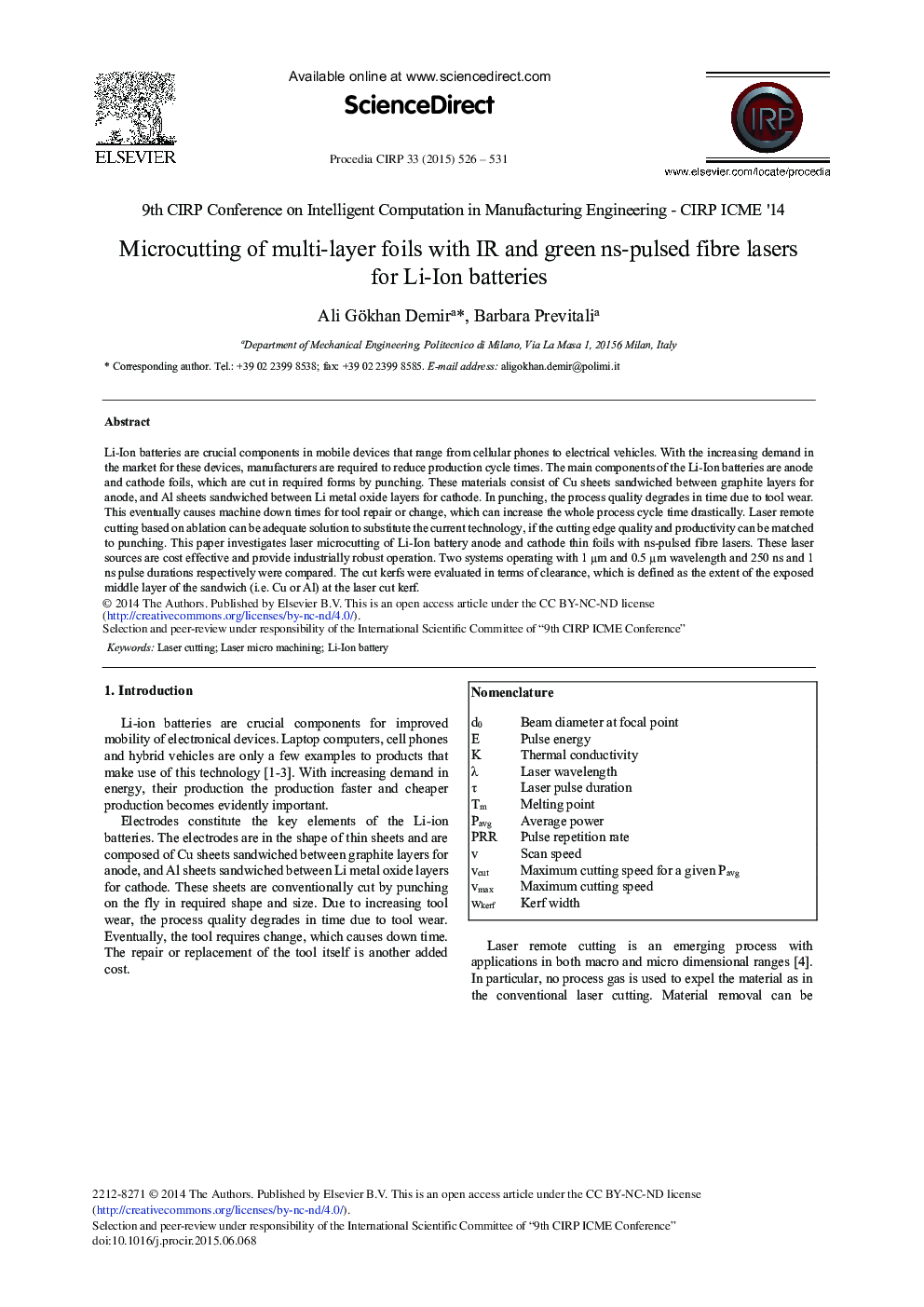| Article ID | Journal | Published Year | Pages | File Type |
|---|---|---|---|---|
| 1699370 | Procedia CIRP | 2015 | 6 Pages |
Li-Ion batteries are crucial components in mobile devices that range from cellular phones to electrical vehicles. With the increasing demand in the market for these devices, manufacturers are required to reduce production cycle times. The main components of the Li-Ion batteries are anode and cathode foils, which are cut in required forms by punching. These materials consist of Cu sheets sandwiched between graphite layers for anode, and Al sheets sandwiched between Li metal oxide layers for cathode. In punching, the process quality degrades in time due to tool wear. This eventually causes machine down times for tool repair or change, which can increase the whole process cycle time drastically. Laser remote cutting based on ablation can be adequate solution to substitute the current technology, if the cutting edge quality and productivity can be matched to punching. This paper investigates laser microcutting of Li-Ion battery anode and cathode thin foils with ns-pulsed fibre lasers. These laser sources are cost effective and provide industrially robust operation. Two systems operating with 1 μm and 0.5 μm wavelength and 250 ns and 1 ns pulse durations respectively were compared. The cut kerfs were evaluated in terms of clearance, which is defined as the extent of the exposed middle layer of the sandwich (i.e. Cu or Al) at the laser cut kerf.
